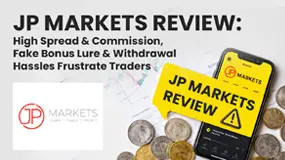简体中文
繁體中文
English
Pусский
日本語
ภาษาไทย
Tiếng Việt
Bahasa Indonesia
Español
हिन्दी
Filippiiniläinen
Français
Deutsch
Português
Türkçe
한국어
العربية
Important Forex Trading Terminology You Should Know
Abstract:Attending a business seminar or conference as a beginner means sitting in on conversations that may as well be in another language. Lots of folks on both sides of the aisle use jargon, acronyms, and abbreviations to talk about issues and figures that you have no idea about.

If you've ever attended business conferences or seminars as a newcomer, you know what it's like to listen in on discussions that seem foreign. People on both sides of the aisle use terminology, acronyms, and abbreviations to refer to people and events about whom you know little or nothing.
It's an embarrassing position, but you can't allow it to get the better of you. Don't allow your lack of knowledge of forex trading terms to prevent you from trying your hand at it.
The answer is simple: study the words that individuals in the forex trading world (particularly in our Fair Forex group) regularly use and discuss. Even if you don't have anything to offer to the debate, you could learn a lot of useful advice for your initial explorations into forex trading.
Here are some examples of forex trading vocabulary that you should be familiar with:
The Fundamentals
Currency Pair - A currency pair, also known as a forex pair, is a pair of currencies, one of which is measured against the other. The base currency is mentioned first, followed by the quotation currency.
Major Pairings - Currency pairs in which the USD serves as the base currency and is coupled with another major currency such as EUR, CAD, GBP, CHF, JPY, AUD, or NZD.
Cross Pairs are pairs of two major currencies that do not include the US dollar.
Exotic Pairs - Currency pairs that include lesser-known currencies such as the South African Rand and the Polish Zloty.
The price at which your dealer will sell a currency pair.
The rate at which your dealer will pay for a currency is known as the bid price.
Bid-Ask Spread - The difference between the asking and bid prices, which might result in a profit or loss. Given the EUR 1 = USD 1.30 / USD 1.40 exchange rate, the spread is USD 0.10. If the gap between the bid and ask prices is tiny, the spread is narrow.
PIP (Percentage In Point) - A single-point price fluctuation used to describe a currency's value change. A pricing quote's pip is generally the final decimal. For example, if the AUD/USD price quotation is 0.7435 and moves to 0.7436, that signifies the price increased by one pip. If it falls to 0.7430, the price has dropped by five pips. The amount of pip that rises or lowers determines the losses or profits.
Lot or Lot Size - The number of currency units purchased or sold by merchants. The pip value is calculated by brokers depending on the current exchange rate and lot size.
Lot Size: 100,000 units
10,000 units in a little lot
1,000 units in a micro lot
100 units of Nano
Leveraged Trading - A popular type of forex trading in which traders speculate or trade in key currency pairings using “leverage,” or money borrowed from the trading platform. Leveraged trading enables you to begin trading with as little as $200.
Open a Position or Open Position - Trading You may get started by purchasing or selling currency pairs.
Close a Position or Close Position - Closing a deal by executing the opposite transaction as when the trade was initiated. This cancels the open position and effectively ends the deal.
Margin - The amount you pay your broker to begin a deal. The margin becomes the equity in your trading account. If you trade in a losing position and your losses surpass your equity, your broker will cancel the deal automatically to protect you from worse losses. When you close the deal, you may receive your money back.
Long Position or “Going Long” - Purchasing a currency pair (buying the first currency and selling the second), which you do if you believe the price of the base currency will rise.
Short position or “going short” - Selling a currency pair (you sell the first currency and purchase the second), which you do if you believe the base currency's price to fall (better to sell earlier while you can still get higher gains instead of later when the price is already lower).
Bullish - A term used to characterize market attitude when prices are rising.
Bearish - An word used to describe market attitude when prices are falling.

Strategies
The following are the most common forex trading methods that you should be familiar with:
Scalping is a high-volume, short-term trading method that lasts just minutes or seconds for each deal. During busy trading hours, it takes advantage of modest, same-day price fluctuations. Expert scalpers make money by amassing tiny victories. The more profitable transactions they make, the more money they make.
Day Trading - Day trading is a more relaxed variation of scalping that is perfect for traders who do not want to keep their positions open overnight. To prevent large price changes after trading hours, traders start and close positions on the same day. Day traders, like scalp traders, must make numerous profitable deals during the day in order to benefit.
Swing Trading is a medium-term trading method in which traders purchase or sell in order to profit from expected market changes. Swing traders examine the market using a variety of techniques. If they see signs that a currency will fall or climb, they will take the proper position and then leave at the appropriate time (when they can get the highest gains). Swing trades may linger for many days and traders might maintain their holdings for several weeks.
Spread betting is speculating on the movement of currencies rather than purchasing them. Spread betting is simply betting on whether the value of a currency will rise or fall. The advantage of this method is that traders may profit whether the market is rising or falling.
This terminology will become increasingly familiar as you trade or learn more about FX trading. In that regard, the Fair Forex Blog is a wonderful location to begin learning about forex trading. Once you open a trading account with Fair Forex, you can also join other skilled traders in our Telegram chat group and watch instructional videos.
Keep an eye out for more Forex trading news.
To stay up to speed on the latest news, download the WikiFX App from the App Store or Google Play Store.

Disclaimer:
The views in this article only represent the author's personal views, and do not constitute investment advice on this platform. This platform does not guarantee the accuracy, completeness and timeliness of the information in the article, and will not be liable for any loss caused by the use of or reliance on the information in the article.
Read more

JP Markets Review: High Spread & Commission, Fake Bonus Lure & Withdrawal Hassles Frustrate Traders
Have you been lured into opening a JP Markets Forex Trading Account with a high bonus offer that never existed? Have you found the spread and commission charges higher on JP Markets Login than what’s advertised on the broker’s website? Wondering why you are not able to withdraw funds from your trading account? Well, all of these hint at a potential forex investment scam. Many traders have expressed their disappointment while sharing the JP Markets Review online. In this article, we have shared certain complaints. Take a look at them.

How to Choose A Forex Broker Today
Learn how to choose a Forex Broker with a regulation‑first checklist, fee transparency tips, and risk safeguards to trade with confidence today.

Angel one 2025 Review & Complaints
Angel One is a well-known name in the forex market. People are familiar with the name , but is this broker really worth your interest? What do real users say about Angel One, and what complaints have they shared? In this Angel One 2025 review, you will explore all these details.

Exclusive Markets Under the Scanner: Traders Report High Swap Charges, Deposit Discrepancies & More
Is your forex trading account experience at Exclusive Markets far from good? Do you witness high swap fees and daily charges? Does the deposit fail to reflect in your Exclusive Markets Login? Don’t receive adequate response from the customer support official on your trading queries? You are not alone! Traders have already alleged that the forex broker is involved in these activities. In this Exclusive Markets WikiFX review article, we shared some traders’ comments. Read on to know about them.
WikiFX Broker
Latest News
Latest FCA Daily Alerts and Consumer Warnings for 2025
Webull Widens Crypto Futures with Coinbase Derivatives
Is Nash Markets Regulated or Risk? Truth About Nash Markets’ License & Withdrawal Issues
Angel one 2025 Review & Complaints
Exclusive Markets Under the Scanner: Traders Report High Swap Charges, Deposit Discrepancies & More
Annual Sales Of New Vehicles Expected To Hit Only 15.7 Million Units: Cox
Saxo Bank Japan Expands European Stock Portfolio with UBS, Ferrari, and Other Major Names
Amillex Broker Affiliate Program: A Complete Guide to Earning with Referrals
New SC Rules Take Effect in November 2025: What’s Next for Finfluencers?
Is Amillex Safe or a Scam? Understanding Rules and Security
Currency Calculator



